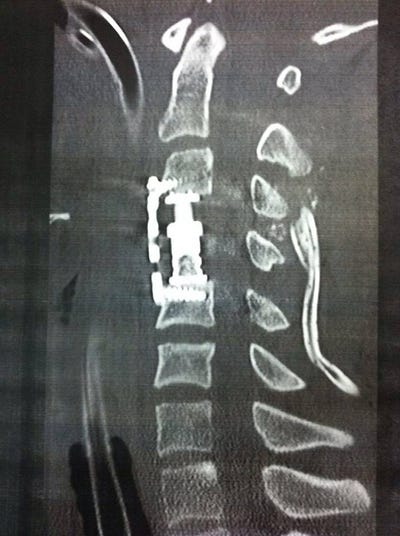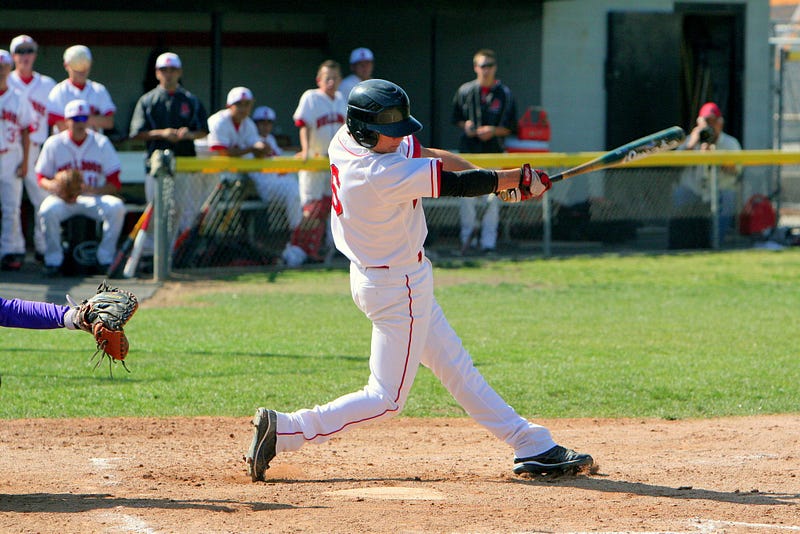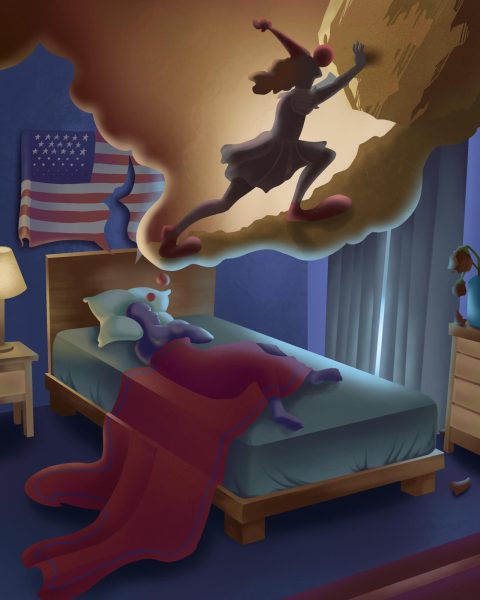Learning To Live Again
The true story of a young man rebuilding his life after a terrible accident left him paralyzed from the neck down

Learning To Live Again
The true story of a young man rebuilding his life after a terrible accident left him paralyzed from the neck down
Story by Jennifer Sandy
Blackness. A literal ocean of never ending darkness interrupted only by his body’s silent screams for air, and the sickening panic when he realized his limbs were no longer responding to his commands. Able to position his head just above the water that threatened to take him under, he received the sweet respite of oxygen filling his lungs, just as his savior pulled him from the waves.
For Kody Peraita, then 16, a sophomore at Ayala High School in Chino Hills Calif. and a promising member of the school’s baseball team, May 27, 2011 started out a day like any other. Before the day was over, Peraita’s life as he knew it would be changed forever.
It was a Friday, the start of Memorial Day weekend, and Peraita planned to kick off the unofficial start of summer by visiting Crystal Cove Beach in California with his then-girlfriend, Daryann Wake, and her father. Upon their arrival, the threesome set up camp for the day on the sand lining the shore, and Peraita ran into the water. It would be the last time he would take being able to freely perform this simple action for granted.
“I ran into the ocean,” Peraita said, “Dove underneath a wave, just like anybody would, and from there it was all black.”
Peraita said he was face down in the water, and the only part of his body he was able to move was his head.
“I just thought ‘oh crap, I’m paralyzed.’”
Peraita said there was no confusion, or a moment of not understanding why his arms and legs were no longer under his control. Somehow, he just knew.

His girlfriend’s father rescued him from the waves and immediately called 911. At the hospital, Peraita was placed on a ventilator, and joined by his parents Tony and Kimberly, and his younger brother, Garrett. Peraita’s parents were informed that their son had hit a sandbar while diving under the waves at the beach and shattered the C4 and C5 vertebrae in his spine. He was paralyzed from the neck down.
Peraita’s father described seeing his son for the first time after the accident.
“I can hear it and see it as if it was happening 30 seconds ago,” Tony said. “When we arrived at the hospital we were greeted by the hospital chaplain. When you’re a parent and the first person you meet from the hospital is the chaplain, it’s not a good thing. She led us to the CAT scan area, where Kody was having tests done. I walked in and saw my baby boy lying on his back, unable to move to see who was walking up next to him. We all arrived right next to Kody, and he finally realized we were there. The first thing he said was ‘Hi mom, can you scratch my nose?’ When I heard Kody ask his mom to do something so simple as to scratch his nose my heart sank and I wanted to burst into tears because I knew life would be different from here on out.”
Peraita spent the next 8 hours on an operating table, after making the statement “Let’s do this,” to the nurses in the room. The phrase would become something of a battle cry to those who supported Peraita in his ongoing recovery.
Before the accident, Peraita said he loved going hiking, fishing, swimming, hunting — anything outdoors and active. He also loved going to the movies and hanging out with his friends. But, one of his real passions, was baseball. He was, and is, an avid Los Angeles Angels fan. During his freshman year of high school he was selected as the varsity shortstop, a feat practically unheard of at the school.

Surprisingly, despite being faced with the very real possibility that he may never get to do many of his favorite activities again, Peraita’s upbeat attitude never wavered as he said he never saw the use in getting frustrated or asking, “Why me?”
“The doctor never told my parents I wouldn’t walk again,” Peraita said. “He always believed I would walk again. But when they told me I was paralyzed I was like, ‘Well I can’t play baseball anymore — that sucks.’ After that I just learned to suck it up and say ‘Okay I got this.’”
My mother, Paula Sandy, was one of Peraita’s teachers when he attended Ranch View Elementary School in Ontario, Calif. years before the accident. She said that Peraita has always been very persistent and was never one to back down from a challenge.
“He was a part of the RSP program in elementary school, a lot of times kids in that program will get frustrated if they don’t get something right away or they’ll give up,” Sandy said. “That was never Kody. From what I remember, he always tried his best, and if he didn’t get something the first time he tried again. He was always trying — always a fighter.”
It was perhaps that fighting spirit that got him through what would prove to be a tough road to recovery. Peraita was placed in a medically induced coma in order to help his body begin the healing process uninterrupted.
“It was weird,” Peraita said of being in the coma. “I could hear everything that went on. I was aware and I knew what people were saying, but I couldn’t respond. It was almost like being in a dream that you can only hear.”
When he awoke, he could only move his eyes from side to side. Try as he might, the rest of his body was unresponsive to his attempts to move. He communicated with his family through blinks and making noises through his mouth, made possible by a tube surgically inserted into his trachea.
“The first thing I had to relearn was breathing on my own,” Peraita said. “Then swallowing on my own.”
He was fed through a feeding tube for nearly a month after the accident, as he regained control of his mouth. Friends and family had been bringing the Peraitas meals, and in celebration, Kimberly Peraita told them that Kody had begun to eat “real food” again, and to make sure to bring enough for four.
After he relearned to breathe and swallow on his own Peraita was released from the hospital. How far he chose to venture down the path of recovery was now completely up to him. True to his nature, Peraita was up for the challenge.
Afterwards, Parieta was admitted into Casa Colina, a hospital in Pomona, Calif. which specializes in post injury/illness rehabilitation. According to Peraita, the focus at Casa Colina isn’t so much rehabilitation in the sense that they work to help you overcome your injury, it’s rehabilitation in the sense that they help you learn to live with your injury.
“They just get you back into your home life. You just learn how to deal with your injury,” Peraita said of Casa Colina.
Following his stint at Casa Colina, Peraita joined Project Walk Paralysis Recovery Centers, a program which focuses on activity-based regimens in order to rehabilitate those with spinal cord injuries. It is a nationwide program, and Peraita attends his sessions in Claremont, Calif.
Since beginning at Project Walk, Peraita has made what once seemed dauntingly impossible a reality. He slowly regained use of his arms and hands, and gradually built himself up to attempting to use his legs. 8 months after his injury, Kody Peraita took his first steps. He was assisted, and in a walker, but those tiny steps freed him from the chains of being a full quadriplegic.
Parieta credits his strides in recovery to the support of his family and friends, and his Project Walk trainers Jenna Hardy and Tanya Slusser.
“I wouldn’t be where I am today without them,” He said.
Tony Peraita said that most people don’t realize that paralysis doesn’t just change the lives of the paralyzed — it changes the lives of their loved ones as well.
“After this accident we were thrown into the fire with learning how to live and learn the life paralysis,” Tony said. “Many people who are unaware [of paralysis] believe a paralyzed person just has limited movement with their limbs, not really realizing it takes someone to help the paralyzed person get out of bed in the morning, get them to the toilet, assist them with going not only number one but number two. When that is finally over the paralyzed person needs assistance to bathe, then get dressed. Afterwards helping them with breakfast. The life of a paralyzed person is extremely difficult on a minute to minute basis until they are helped into bed at night.”
“It’s an injury unlike any other.”
Fortunately, through a series of exercises designed to help rebuild the muscle in his torso, arms and legs that were lost after he was paralyzed, Peraita’s progression increased. The exercises became more rigorous, using a combination of high tech walkers, and those around him holding him up to ensure he wouldn’t fall; his trainers enabled him to put one foot in front of the other.
According to Peraita’s father, one of Kody’s goals was to walk across the stage to get his diploma at his high school graduation. On June 5, 2013 Peraita accomplished that goal.
“I was nervous that I would mess up,” Peraita said, “But Jenna and Tanya were there pretty early and we practiced what to do so I wouldn’t fall or mess up the stage. But then they had to leave, because I had to walk out with my class. I was pretty early in graduation, I think I was like the second row to go.”
After Kody made his way with his walker to the stage, he heard his name called. Focusing on his steps, he realized that his teacher Debi Weiss, who he said helped him a lot with school after the accident, was holding his hips so they wouldn’t fall.
“I shook her hand, grabbed my diploma and the whole place went crazy.”

Today, Kody continues to defy the odds and push toward being able to walk without the help of a walker or a wheelchair. Peraita knows in the back of his mind that that may never happen, but he refuses to let his disability limit him in life.
Peraita is currently a student at Mt. San Antonio College. Unsure of his major, he is considering becoming a teacher or a nutritionist.
Peraita now enjoys hiking, swimming fishing, hunting, and movies — all of the activities he enjoyed before that fateful day on a California beach, and he is currently partaking in all of the summer activities of a typical twenty something year old. He has even found a way to keep baseball in his life. Peraita has gotten a job as the assistant coach of the varsity baseball team at Diamond Ranch High School in Pomona, Calif. coaching under Jim Weiss. He has found normalcy in figuring out how to do the activities he loves despite his paralysis.
“I don’t let my injury hold me back,” Peraita said, “I can do whatever I want, I just gotta find a different way to do it.”
The following video is dedicated to Peraita and his recovery:
If you would like to follow Peraita’s journey to recovery please visit the Team Kody Facebook page. The Peraita family has also started a gofundme page to aid with expenses in keeping Kody in his Project Walk program.
Video by: Jennifer Sandy
Substance is a publication of the Mt. San Antonio College Journalism Program. The program recently moved its newsroom over to Medium as part of a one-year experiment. Read about it here.







